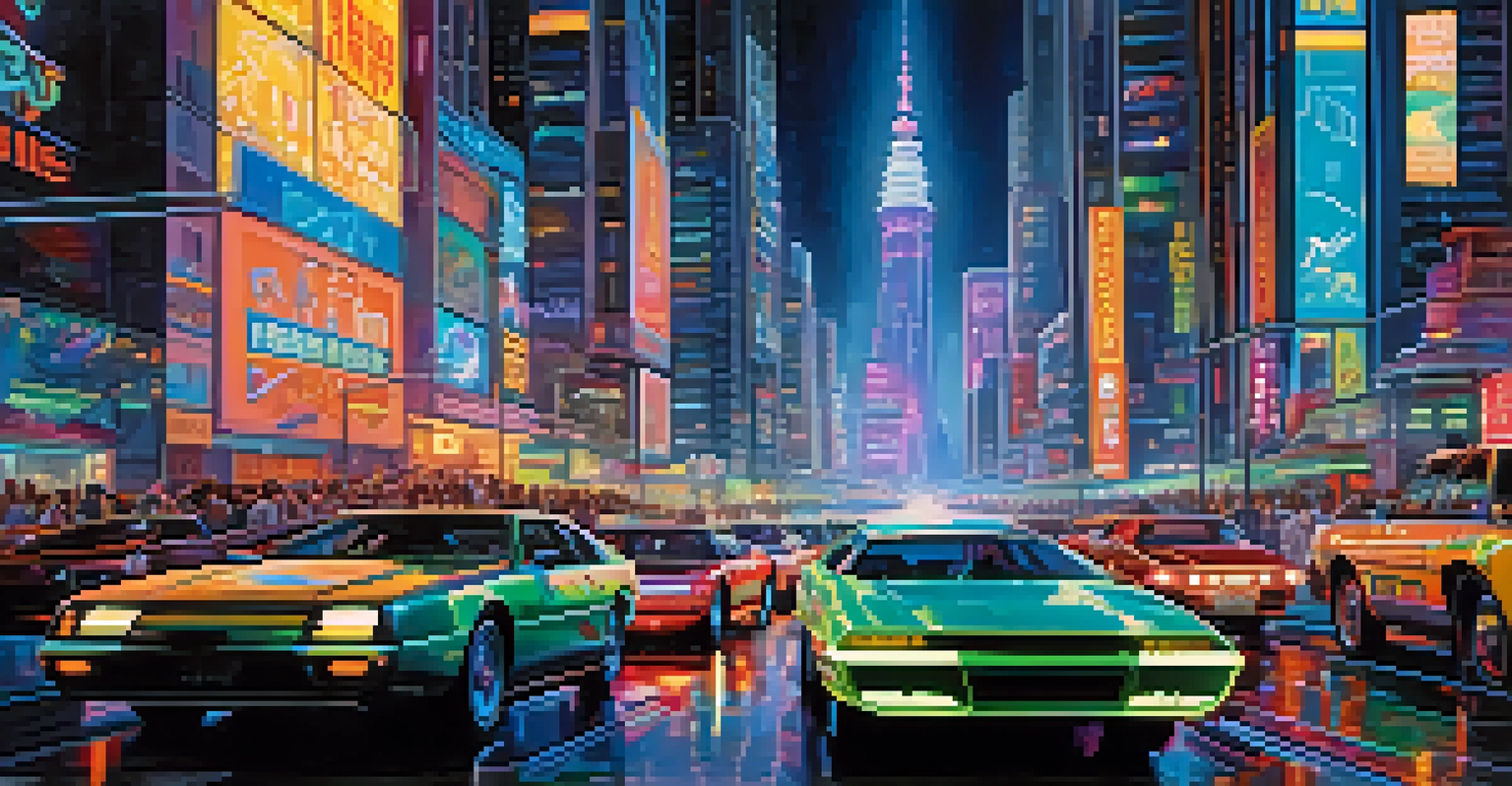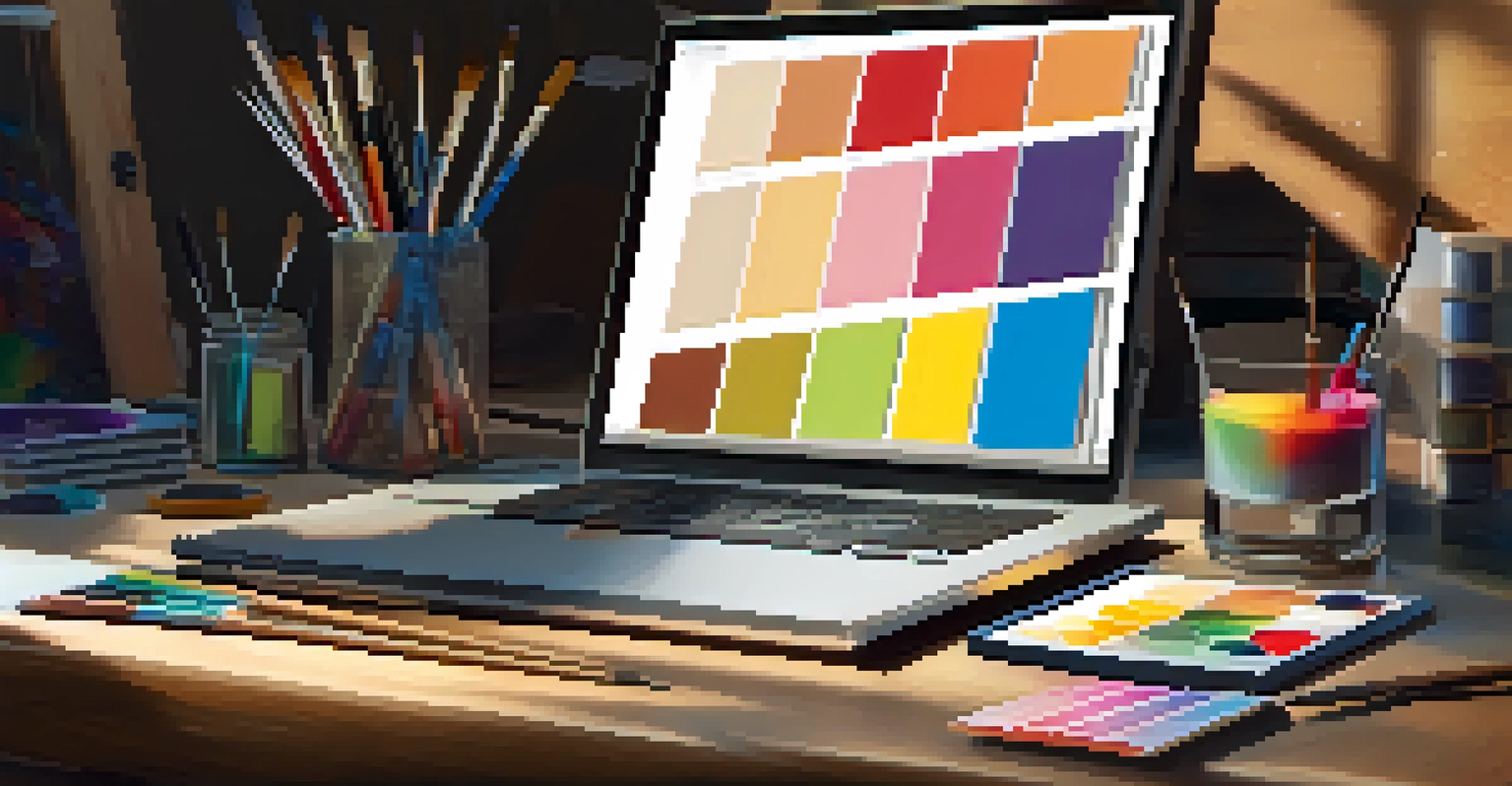The Rise of Digital Painting: Tools and Techniques Unveiled

Understanding Digital Painting: A New Artistic Medium
Digital painting has emerged as a revolutionary form of art that combines traditional techniques with modern technology. Unlike conventional painting, it utilizes digital tools to create artwork directly on a computer or tablet. This shift has opened doors for countless artists, allowing them to explore new dimensions of creativity.
Digital painting is not just about creating art; it's about harnessing technology to express emotions and tell stories in ways that were previously unimaginable.
With the rise of high-resolution screens and powerful software, artists can now manipulate colors and textures with unparalleled precision. Digital canvases can be as vast as the artist's imagination, offering limitless possibilities. This transformation is akin to moving from a basic notepad to a powerful word processor; the tools enhance the artist’s capabilities significantly.
Related Resource
Moreover, digital painting fosters collaboration and sharing within the art community. Artists can easily share their work online, receive feedback, and even collaborate on projects in real-time. This interconnectedness not only inspires creativity but also builds a supportive network for artists around the globe.
Essential Tools for Digital Painting: Hardware and Software
To embark on a digital painting journey, artists need the right tools. At the core, a tablet or a graphics tablet is essential, as it allows for natural drawing motions similar to traditional methods. Brands like Wacom and Huion offer a variety of options tailored to different skill levels and budgets.

In addition to hardware, software plays a crucial role in digital painting. Programs like Adobe Photoshop, Corel Painter, and Procreate provide artists with a rich palette of brushes, textures, and effects to experiment with. Each software has unique features, so choosing the right one can enhance an artist's workflow and creativity.
Digital Painting Transforms Art
Digital painting combines traditional techniques with modern technology, allowing for greater creativity and collaboration among artists.
Lastly, accessories like styluses and screen protectors can further enhance the experience. A good stylus mimics the feel of a paintbrush or pencil, allowing for greater control. Investing in quality tools can make the difference between a frustrating experience and a fluid, enjoyable creative process.
Techniques in Digital Painting: Blending Tradition and Innovation
Digital painting techniques can vary widely, allowing artists to blend traditional methods with innovative approaches. One popular technique is 'layering,' which enables artists to build depth and complexity in their work. Just like in traditional painting, layering helps create shadows, highlights, and textures, but with the added benefit of non-destructive editing.
Art is a collaboration between God and the artist, and the less the artist does the better.
Another technique that has gained popularity is 'photo bashing,' where artists combine digital painting with photographic elements. This method can create stunning and realistic effects, making the artwork visually striking. It's similar to collage-making but utilizes digital assets to achieve a seamless integration of images.
Related Resource
Finally, understanding color theory is vital in digital painting. Artists can experiment with color palettes and gradients more freely than ever, but knowing how colors interact is crucial. This knowledge not only enhances the aesthetic appeal but also conveys emotions and themes effectively within the artwork.
The Impact of Digital Painting on the Art Community
Digital painting has significantly transformed the art community, making art more accessible to aspiring artists. With minimal startup costs compared to traditional mediums, more individuals can explore their creativity without the financial burden. This democratization of art encourages diverse voices and styles to emerge.
Moreover, digital platforms enable artists to showcase their work to a global audience. Social media sites like Instagram and art-focused platforms like DeviantArt allow for instant sharing and feedback. This exposure can lead to opportunities for collaboration, commissions, and even exhibitions, creating a vibrant online art community.
Essential Tools for Artists
Artists need the right hardware and software, such as graphics tablets and programs like Adobe Photoshop, to enhance their digital painting experience.
However, this shift has also sparked discussions about the value of traditional versus digital art. While some purists argue that traditional methods hold more authenticity, digital artists emphasize that the creativity and skill involved are equally important. Ultimately, both forms contribute uniquely to the rich tapestry of contemporary art.
Challenges in Digital Painting: Navigating the New Landscape
While digital painting offers numerous advantages, artists also face unique challenges. One of the primary hurdles is the steep learning curve associated with mastering digital tools and software. For those accustomed to traditional techniques, transitioning to digital can initially be overwhelming, much like learning to ride a bike for the first time.
Another challenge is the potential for distraction in a digital environment. With notifications, social media, and other digital temptations at our fingertips, staying focused on the artwork can be difficult. Establishing a dedicated workspace and setting boundaries with technology can help artists maintain their concentration.
Related Resource
Lastly, the issue of originality and authenticity often arises in the digital realm. With the ease of replicating styles and techniques, artists must strive to develop their unique voice amidst a sea of digital creations. Embracing individuality and continuous learning can help artists navigate this crowded landscape successfully.
The Future of Digital Painting: Trends to Watch
As technology continues to evolve, the future of digital painting looks promising. One emerging trend is the rise of augmented reality (AR) in the art world. Artists are beginning to experiment with AR applications, allowing viewers to interact with their artwork in new and exciting ways. This innovation could redefine how audiences experience art.
Additionally, artificial intelligence (AI) is making its mark on digital painting. AI tools can assist artists by suggesting color palettes, generating backgrounds, or even creating entire pieces based on specific inputs. While this may raise questions about the role of the artist, it also presents opportunities for collaboration between human creativity and machine intelligence.
Emerging Trends in Digital Art
The future of digital painting includes trends like augmented reality and AI assistance, which will redefine how art is created and experienced.
Finally, the integration of digital painting in various industries is likely to expand. From video games to animation and advertising, digital artists will find themselves in high demand as businesses seek unique and engaging visuals. This growing intersection between technology and creativity promises to drive innovation and inspire the next generation of artists.
Learning Resources for Aspiring Digital Painters
For those eager to dive into digital painting, numerous resources are available to facilitate learning. Online tutorials and platforms like YouTube offer a wealth of free content, covering everything from basic techniques to advanced skills. Engaging with these resources can help aspiring artists build a strong foundation.
Art communities and forums, such as ArtStation and ConceptArt.org, provide spaces for artists to share their work, receive feedback, and learn from one another. These platforms foster a sense of belonging and motivation, making the learning process more enjoyable. Connecting with peers can also spark inspiration and drive personal growth.

Lastly, investing in online courses or workshops can accelerate the learning journey. Many experienced artists offer structured lessons that provide valuable insights and guidance. Whether through video lessons or live sessions, these courses can provide a deeper understanding of digital painting techniques and help artists refine their skills.